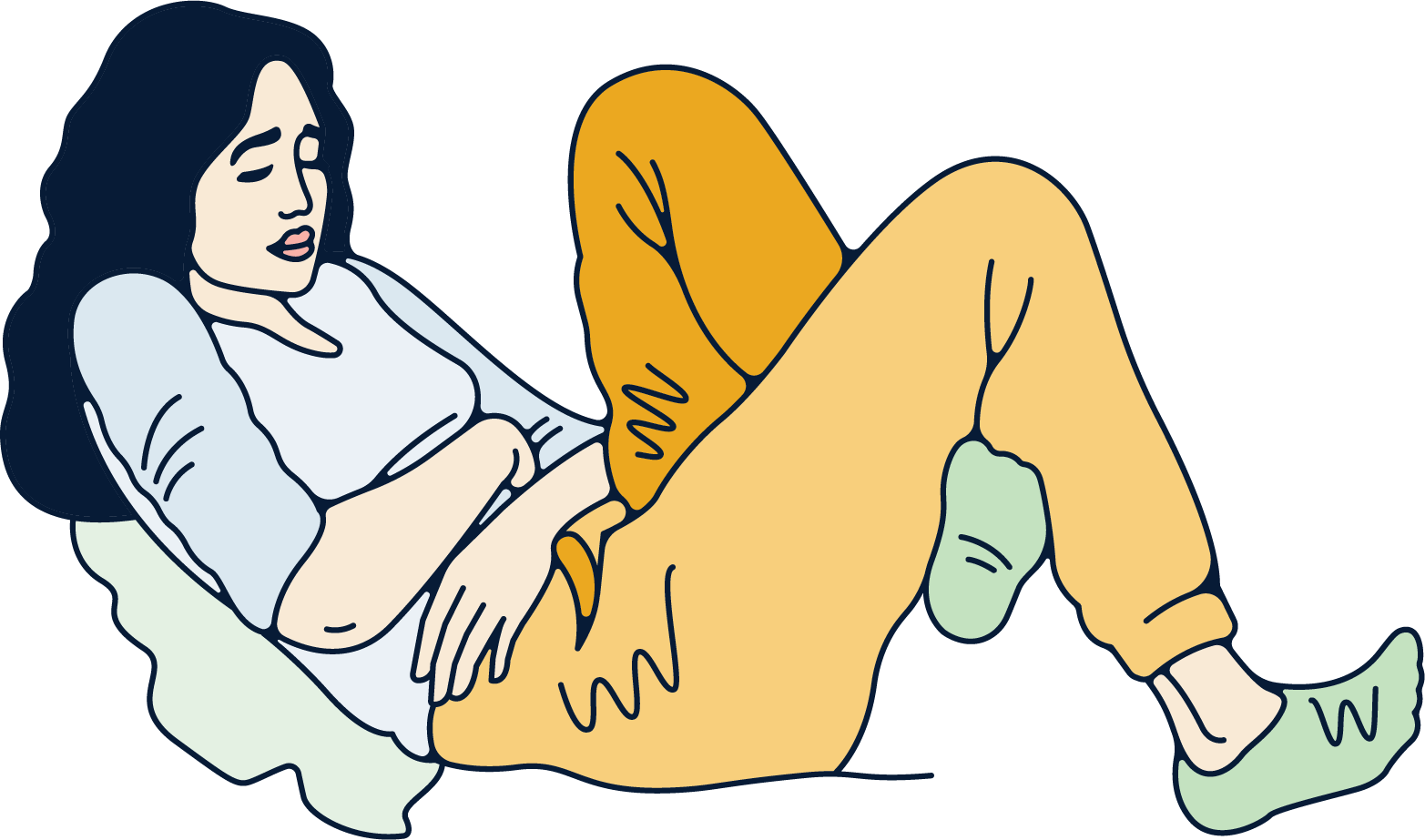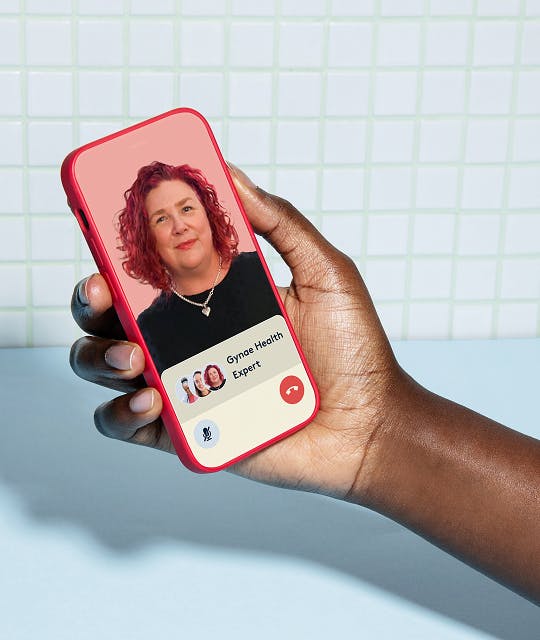Table of contents
1. What Exactly is PMDD?
2. Understanding PMDD Symptoms: Beyond Typical PMS
3. Why Does PMDD Happen? The Science Behind the Condition
4. The Path to Diagnosis: Understanding the Process
5. Living with PMDD: Real Experiences
6. Moving Forward: Support and Resources
Written by Megan Wallace
Medically reviewed by Sarah Montagu (RN DFSRH, BSc)
Illustrated by Sabrina Bezerra Erin Rommel
What you'll learn:
- What PMDD is and how it differs from PMS
- Key symptoms to watch for and track
- Treatment options and how to get help
- Real stories from PMDD warriors
What Exactly is PMDD?
While PMS affects between 20% and 85% of menstruating individuals, Premenstrual Dysphoric Disorder (PMDD) impacts a smaller but significant 5% of the population. Despite its serious impact on daily life, PMDD often remains underdiagnosed or mistaken for other mental disorders, making it crucial to understand its distinct characteristics and available treatment options.
PMDD is generally understood as “severe PMS”, though that only tells half of the story. The condition generally entails acute physical and/or emotional symptoms in the second half of your cycle, one to two weeks before your period is due.
Understanding PMDD Symptoms: Beyond Typical PMS
Physical Symptoms
- Joint pain that can significantly impact mobility
- Persistent headaches
- Disrupted sleep patterns
- Breast tenderness and swelling
Emotional Symptoms
- Depression that interferes with daily activities
- Heightened anxiety
- Difficulty concentrating
- In severe cases, suicidal thoughts requiring immediate medical attention
Sufferers of PMDD can find that they have difficulty working or studying or that their personal relationships can be put under stress in the weeks before their period.

Why Does PMDD Happen? The Science Behind the Condition
Not much is currently known about what causes PMS and PMDD, but researchers believe they are linked to changes in hormone levels. At the end of your menstrual cycle, once you’ve ovulated, if you’re not pregnant you experience a drop in oestrogen and progesterone.
Research suggests that people with PMDD have an increased sensitivity to the normal hormonal fluctuations that occur during your menstrual cycle.
Differently to PMS, PMDD is also particularly common in women who have a history (or family history) of depression – suggesting a genetic component – or who have experienced postpartum depression.
The Path to Diagnosis: Understanding the Process
The PMDD Diagnostic Criteria
Due to the emotional symptoms of the disorder there’s a tendency to misdiagnose PMDD with other mental health issues, such as bipolar disorder or depression.
The lack of knowledge and research on the disorder means it can generally be hard to get a diagnosis – so it’s important to keep track of your symptoms on a calendar or diary.
In fact, in order to receive a confirmed medical diagnosis of PMDD, you need at least five out of 14 symptoms.
Namely, that over several months PMDD symptoms appear in the weeks leading up to your period, and that they stop shortly after your period has begun.
The diagnostic symptoms for PMDD include:
- Mood swings, feeling suddenly sad or tearful, irritable, anxious or hopeless
- A decreased interest in usual activities
- Finding it hard to concentrate
- Fatigue
- A change in appetite (overeating or specific food cravings)
- Hypersomnia or insomnia
- A sense of being overwhelmed or out of control
- Physical symptoms such as breast tenderness or swelling; joint or muscle pain, and bloating
It’s common to experience all of the above at some point in your life, but in the case of PMDD you’re likely to experience at least five of these every month before your period arrives.
These symptoms are also typically so severe that they interfere with school, work, relationships and other social activities.
For those with a different cycle, or with a non-textbook experience of PMDD, it can be even harder to demonstrate that they’re suffering from the disorder.
How to treat PMDD?
Treating PMDD isn’t easy, given the range of symptoms you can experience. As a first course of action, your doctor will likely recommend lifestyle changes to help manage the symptoms of PMDD.
These include regular exercise, regular sleep, stress reduction (easier said than done, we know!), and restricting smoking and alcohol intake.
Although there is limited evidence to support the use of complementary treatments, your doctor may also suggest reflexology, acupuncture, or dietary supplements like magnesium.
Implementing these lifestyle changes might make PMDD symptoms more manageable, but you may still need further treatment.
Common medical approaches include prescribing the pill or antidepressants like SSRIs, though these are not always effective for all people. In some particularly severe (rare) cases, where other treatments are not working and your life is significantly impacted by PMDD, your doctor might suggest a hysterectomy.

Living with PMDD: Real Experiences
The lack of awareness around PMDD, coupled with the fact that women are often discouraged from talking about their periods, means that women struggling with PMDD can struggle for a long time without a diagnosis.
This was the experience of Helena, 24. “My PMDD experience is a bit atypical as one month I’ll be fine and then the next month I’ll experience symptoms. I get very, very depressed and become really self-destructive in my life,” she says, explaining her symptoms.
“For a long time, I kind of just thought it was PMS but when I was describing it to other people, I realised how bad it is, it stopped me from living my life as normal.”
Whilst its been a bumpy road, she can now say that her experience with PMDD has greatly improved, though she turned to alternative treatments rather than anything offered by the NHS.
“The main thing the NHS can offer is antidepressants – either all the time or for the weeks where you’re experiencing symptoms,” she explains. “I didn’t want to be on SSRIs, so I’m using 5HTP (an amino acid used to stimulate serotonin production) at the moment. Whether it’s a placebo effect or not, it does make me feel better.”
Regardless of what treatment options women choose to pursue, she thinks that there needs to be more information out there so that it’s easier for them to seek medical help. “I think it would be good if there was more awareness,” Helena says. “It means you don’t really have to try and self-diagnose.”
For Sophie, 23, an ignorance amongst medical professionals and sexism were major stumbling blocks in the process of having her condition recognised. “I first found out about PMDD and thought that I might have it in autumn 2017 but there were a lot of complications with my diagnosis and it took a long time,” she says.
“A lot of doctors I went to see either didn’t know what PMDD was or didn’t take me seriously even when I had tracked my mood and my cycle for months and found the link."
The sexism and gaslighting which Sophie has experienced has made her feel strongly that the stigma around PMDD needs to be broken. “When I got my diagnosis I felt like it was quite an embarrassing problem to have or like I just wasn’t coping with what everyone else who gets periods successfully copes with,” she explains.
“There definitely needs to be more awareness about it, especially considering some doctors I spoke to didn’t even know what it was and it should be taken as seriously as other mental health issues.”
Moving Forward: Support and Resources
PMDD can feel isolating, but support and treatment options are available. The key steps toward managing PMDD include:
- Tracking symptoms systematically
- Seeking qualified healthcare providers
- Building a supportive healthcare team
- Exploring treatment options that align with individual needs
- Connecting with support groups and resources
When to Seek Immediate Help
Contact a healthcare provider immediately if experiencing:
- Thoughts of self-harm
- Severe depression
- Inability to maintain daily activities
- Significant relationship or work difficulties
Understanding PMDD continues to evolve through ongoing research and increased awareness. With proper diagnosis and treatment, many individuals with PMDD can effectively manage their symptoms and maintain their quality of life.
Related Products








